
Sarah Jane Cervenak, Black Gathering. Duke University Press, 2021.
In Black Gathering Sarah Jane Cervenak engages with Black artists and writers who create alternative spaces for Black people to gather free from interruption or regulation. Drawing together Black feminist theory, critical theories of ecology and ecoaesthetics, and Black aesthetics, Cervenak shows how novelists, poets, and visual artists such as Gayl Jones, Toni Morrison, Clementine Hunter, Samiya Bashir, and Leonardo Drew advance an ecological imagination that unsettles Western philosophical ideas of the earth as given to humans. In their aestheticization and conceptualization of gathering, these artists investigate the relationships among art, the environment, home, and forms of Black togetherness. Cervenak argues that by offering a formal and conceptual praxis of gathering, Black artists imagine liberation and alternative ways of being in the world that exist beyond those Enlightenment philosophies that presume Black people and earth as given to enclosure and ownership.
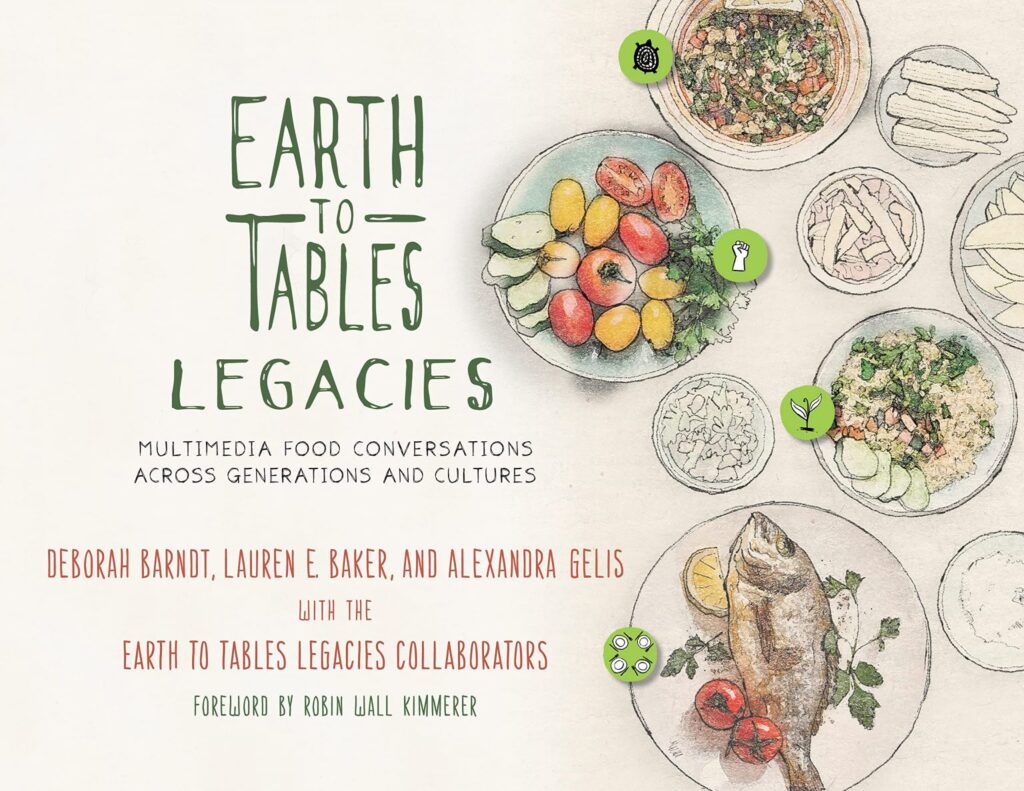
Deborah Barndt, Lauren Baker, and Alexandra Gelis, Earth to Tables Legacies. Rowman & Littlefield, 2023.
Climate crises, a global pandemic, food riots, diet-related diseases – all are telling us that the industrial food system threatens our health and the survival of the planet, and deepens systemic inequities, racism, and poverty.
These are the stories of food activists from Turtle Island (North America) – young and old, Indigenous and settler – who share a vision for food justice and food sovereignty, from Earth to Tables.
The Earth to Tables Legacies educational package offers 10 videos and 11 photo essays that use food as an entry to pressing issues, such as Indigenous-settler relations, food justice and food sovereignty, and anti-racism in the food movement.

Barbara Boissevain, Salt of the Earth: A Visual Odyssey of a Transforming Landscape. Kehrer Verlag, 2024.
Salt of the Earth is a striking monograph, which skillfully captures humanity’s impact on the environment. From ground-level perspectives to aerial shots, Barbara Boissevain’s unique compositions of industrial salt ponds, accentuate the surreal qualities of landscapes altered by human activity. The artist’s intention extends beyond crafting captivating visuals; her work seeks to raise awareness of pressing environmental concerns and inspire engagement in conservation- related activism. Boissevain’s photographs of otherworldly landscapes compel us to reflect on the delicate balance between creation and devastation. Her powerful imagery challenges viewers to reassess their role in shaping Earth’s future, ultimately urging us to confront the consequences of our actions and actively participate in preserving the environment for generations to come.
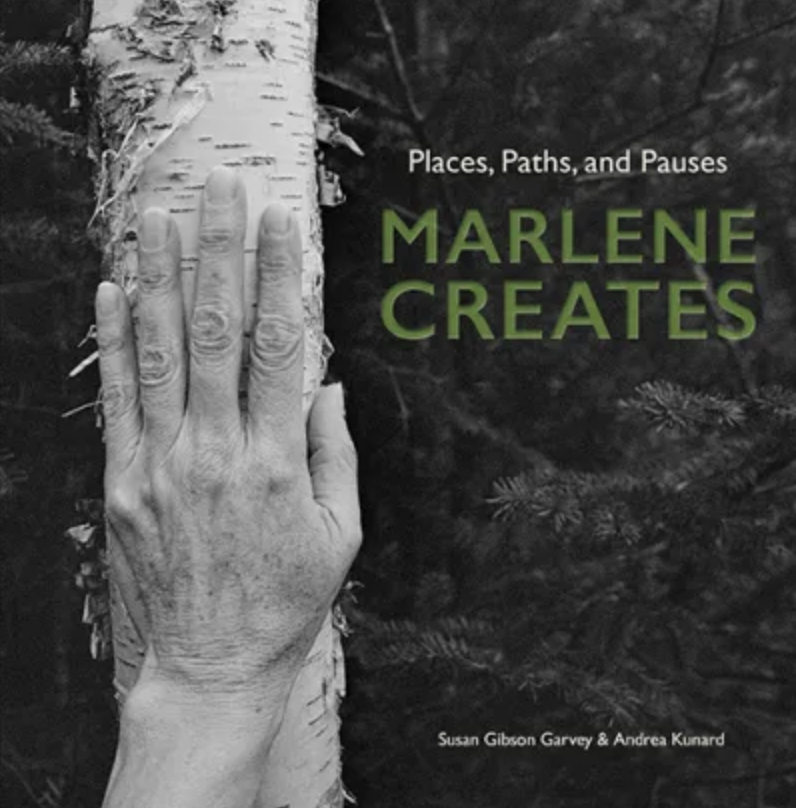
Susan Gibson Garvey and Andrea Kunard, Marlene Creates. Goose Lane Editions with Beaverbrook Art Gallery, 2017.
“… I was able to make a simple gesture which left no permanent mark on the land.”
In 1979 Marlene Creates signaled her intent. In contrast to the monumental earthworks of that time, she revealed that her interest in the intersection of art and the natural world was with the ephemeral, the small scale, and the non-monumental, and with place, “not as a geographical location,” she writes, “but as a process that involves memory, multiple narratives, ecology, language, and both scientific and vernacular knowledge.” Supplementing the impermanence of her artistic gestures with the technology of photography, Creates found an audience and created a body of work without peer.
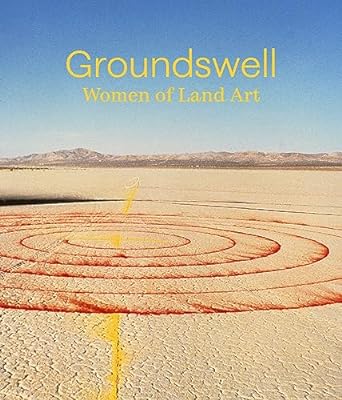
Leigh Arnold, ed. Groundswell: Women of Land Art. DelMonico Books/Nasher Sculpture Center, 2023.
Using materials such as earth, wind, water, fire, wood, salt, rocks, mirrors and explosives, American artists of the 1960s began to move beyond the white cube gallery space to work directly in the land. With ties to Minimal and Conceptual art, these artists placed less emphasis on the discrete object and turned their attention to the experience of the artwork―however fleeting or permanent that might be―foregrounding natural materials and the site itself to create large-scale works located outside of typical urban art-world circuits.
Histories of Land art have long been dominated by men, but Groundswell: Women of Land Art shifts that focus to shed new light on the vast number of earthworks by women artists. While their careers ran parallel to those of their better-known male counterparts, they have received less recognition and representation in museum presentations―until now.
This book includes five scholarly essays, as well as a detailed chronology, exhibition checklist and illustrated biographies of exhibition artists. Groundswell is a resource for readers interested in understanding the historical Land art movement and our own relationship to the earth.
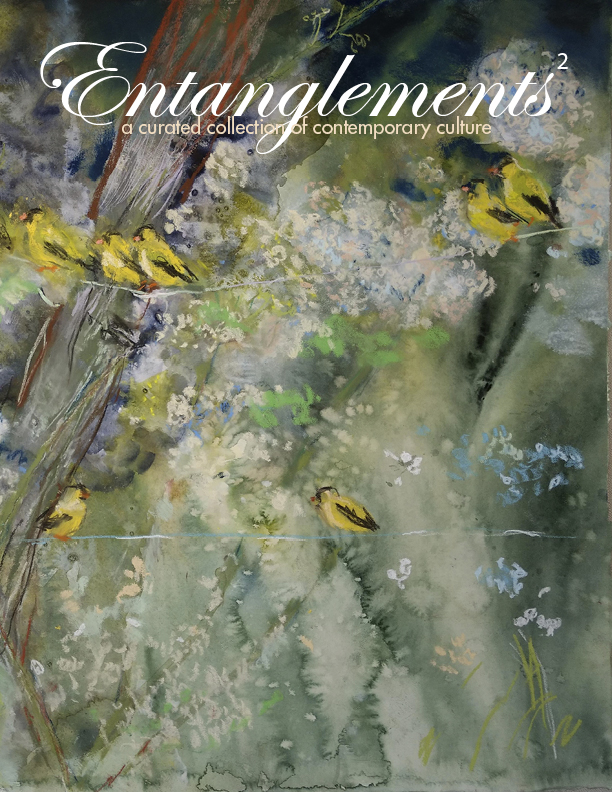
Nanette Wylde, Entanglements: A Curated Collection of Contemporary Culture. Hunger Button Books, 2023.
Entanglements2 has a focused theme of biophilia.
- Featuring artwork and essays by: Arturo Araujo, Willa Briggs, Shari Bryant, Israel Campos, Binh Danh, Annette Goodfriend, Emily Gui, Yunan Ma, Kent Manske, Hector Dionicio Mendoza, Jiamao Yuan, and J. Adán Ruiz
- Poems by: James Cagney, Aileen Cassinetto, Chloe Chou, Veronica Kornberg, and Eileen Tabios
- Interviews with: Sharmon Hilfinger, Judith Selby Lang, and Zach Pine

Alexis Pauline Gumbs, Undrowned: Black Feminist Lessons from Marine Mammals. AK Press, 2022.
Undrowned is a book-length meditation for the entire human species, based on the subversive and transformative lessons of marine mammals. Alexis Pauline Gumbs has spent hundreds of hours watching our aquatic cousins. She has found them to be queer, fierce, protective of each other, complex, shaped by conflict, and struggling to survive the extractive and militarized conditions humans have imposed on the ocean. Employing a brilliant mix of poetic sensibility, naturalist observation, and Black feminist insights, she translates their submerged wisdom to reveal what they might teach us. The result is a powerful work of creative nonfiction that produces not a specific agenda but an unfolding space for wonder and questioning.
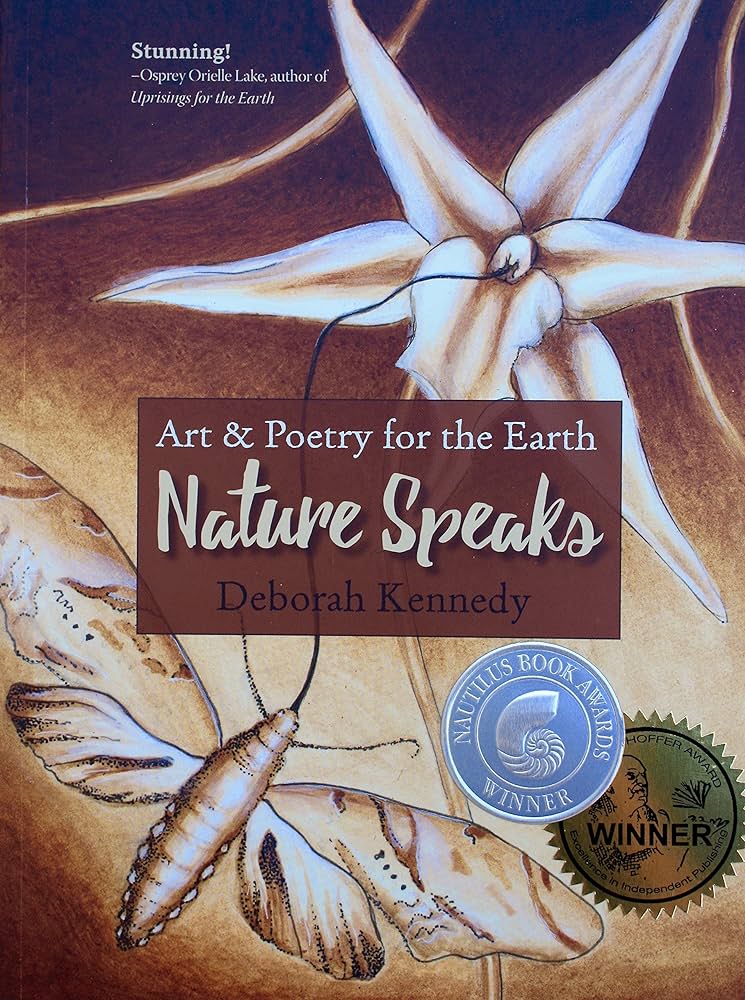
Deborah Kennedy, Nature Speaks: Art & Poetry for the Earth. White Cloud Press, 2016.
In Nature Speaks, Deborah Kennedy’s captivating poetry and illustrations bring to life the profound bond between ourselves and the larger natural world. Kennedy focuses on the ecological themes of our time, infusing art and science with insight and passion. Her powerful poetry and earth-toned ink illustrations feature the elegance of birds and strength of redwood trees, appealing to the eye, the mind, and the heart. Nature Speaks invites us to listen to the earth—to appreciate nature’s grace, complexity, and vigor—as we move toward pathways for healing ourselves and the earth. Kennedy’s artwork consists of conceptually-based installations and objects in galleries, museums and public spaces. Her work begin with questions, such as: What new ways of thinking can help us solve our environmental problems? Can we reform our technological systems so they operate in a bio-compatible manner? How is exposure to toxic chemicals affecting the health of human and animal populations? Questions, such as these, focusing on social and environmental dilemmas are the starting point of her work.
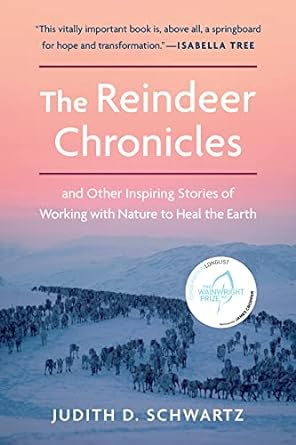
Judith D. Schwartz, The Reindeer Chronicles: and Other Inspiring Stories of Working with Nature to Heal the Earth. Chelsea Green Publishing, 2020
Award-winning science journalist Judith D. Schwartz takes us first to China’s Loess Plateau, where a landmark project has successfully restored a blighted region the size of Belgium, lifting millions of people out of poverty. She journeys on to Norway, where a young indigenous reindeer herder challenges the most powerful orthodoxies of conservation—and his own government. And in the Middle East, she follows the visionary work of an ambitious young American as he attempts to re-engineer the desert ecosystem, using plants as his most sophisticated technology.
Schwartz explores regenerative solutions across a range of landscapes: deserts, grasslands, tropics, tundra, Mediterranean. She also highlights various human landscapes, the legacy of colonialism and industrial agriculture, and the endurance of indigenous knowledge.
The Reindeer Chronicles demonstrates how solutions to seemingly intractable problems can come from the unlikeliest of places, and how the restoration of local water, carbon, nutrient, and energy cycles can play a dramatic role in stabilizing the global climate. Ultimately, it reveals how much is in our hands if we can find a way to work together and follow nature’s lead.

Women Art/Special Edition. Collect.Art (Tbilisi, Georgia), 2023
Women in art history have revealed a significant engagement of females throughout the centuries in different countries. Their engagement has appeared in many forms, including women who were innovative in new ways of artistic expression, women as patrons, women as collectors, and women as sources of inspiration. Society has traditionally urged women to stay back and guard the privacy of their homes instead of opening their talents to the public. Women have been discriminated against for centuries and major institutions have not supported the careers of women artists. Although the number of women artists is growing, the situation has only slightly changed, and this is likely due to tradition and prestige.
However, change is occurring, and even if we look at the figures today, women in artworks can be seen and heard. Women artists are making an impact in the contemporary art world, creating powerful works of art that demand attention and recognition. Women are exploring diverse themes, styles, and mediums, pushing boundaries, and challenging traditional norms in the art world. As a result, female artists are gaining greater visibility and recognition, and the art world is increasingly recognizing the importance of women’s contributions to the field.
